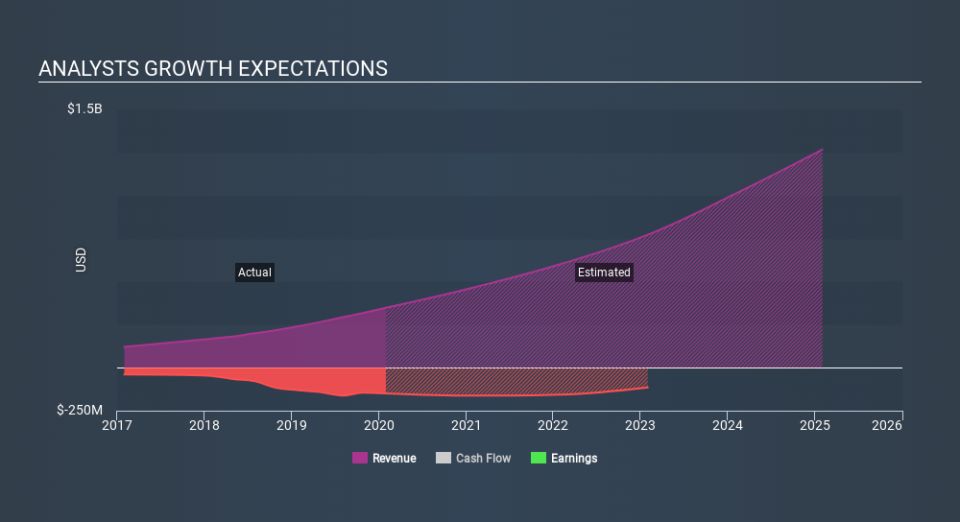Anaplan, Inc. Just Reported, And Analysts Assigned A US$59.74 Price Target

Shareholders in Anaplan, Inc. (NYSE:PLAN) had a terrible week, as shares crashed 22% to US$44.94 in the week since its latest annual results. Revenues came in at US$348m, in line with forecasts and the company reported a statutory loss of US$1.15 per share, roughly in line with expectations. Following the result, analysts have updated their earnings model, and it would be good to know whether they think there's been a strong change in the company's prospects, or if it's business as usual. So we gathered the latest post-earnings forecasts to see what analysts' statutory forecasts suggest is in store for next year.
Check out our latest analysis for Anaplan
Taking into account the latest results, the latest consensus from Anaplan's 16 analysts is for revenues of US$465.3m in 2021, which would reflect a huge 34% improvement in sales compared to the last 12 months. Statutory losses are forecast to narrow 3.1% to US$1.19 per share. Before this latest report, the consensus had been expecting revenues of US$460.6m and US$1.20 per share in losses. There was no real change to the revenue estimates, but analysts do seem more bullish on earnings, given the earnings per share expectations following these results.
Analysts trimmed their valuations, with the average price target falling 10% to US$59.74, with the ongoing losses seemingly weighing on sentiment, despite no real changes to the earnings forecasts. Fixating on a single price target can be unwise though, since the consensus target is effectively the average of analyst price targets. As a result, some investors like to look at the range of estimates to see if there are any diverging opinions on the company's valuation. There are some variant perceptions on Anaplan, with the most bullish analyst valuing it at US$71.00 and the most bearish at US$48.00 per share. These price targets show that analysts do have some differing views on the business, but the estimates do not vary enough to suggest to us that some are betting on wild success or utter failure.
Further, we can compare these estimates to past performance, and see how Anaplan forecasts compare to the wider market's forecast performance. We can infer from the latest estimates that analysts are expecting a continuation of Anaplan's historical trends, as next year's forecast 34% revenue growth is roughly in line with 33% annual revenue growth over the past three years. By contrast, our data suggests that other companies (with analyst coverage) in a similar industry are forecast to see their revenues grow 12% per year. So it's pretty clear that Anaplan is forecast to grow substantially faster than its market.
The Bottom Line
The most important thing to take away is that analysts increased their loss per share estimates for next year. Happily, there were no major changes to revenue forecasts, with analysts still expecting the business to grow faster than the wider market. Analysts also downgraded their price target, suggesting that the latest news has led analysts to become more pessimistic about the intrinsic value of the business.
Still, the long-term prospects of the business are much more relevant than next year's earnings. We have estimates - from multiple Anaplan analysts - going out to 2025, and you can see them free on our platform here.
You can also see our analysis of Anaplan's Board and CEO remuneration and experience, and whether company insiders have been buying stock.
If you spot an error that warrants correction, please contact the editor at editorial-team@simplywallst.com. This article by Simply Wall St is general in nature. It does not constitute a recommendation to buy or sell any stock, and does not take account of your objectives, or your financial situation. Simply Wall St has no position in the stocks mentioned.
We aim to bring you long-term focused research analysis driven by fundamental data. Note that our analysis may not factor in the latest price-sensitive company announcements or qualitative material. Thank you for reading.

